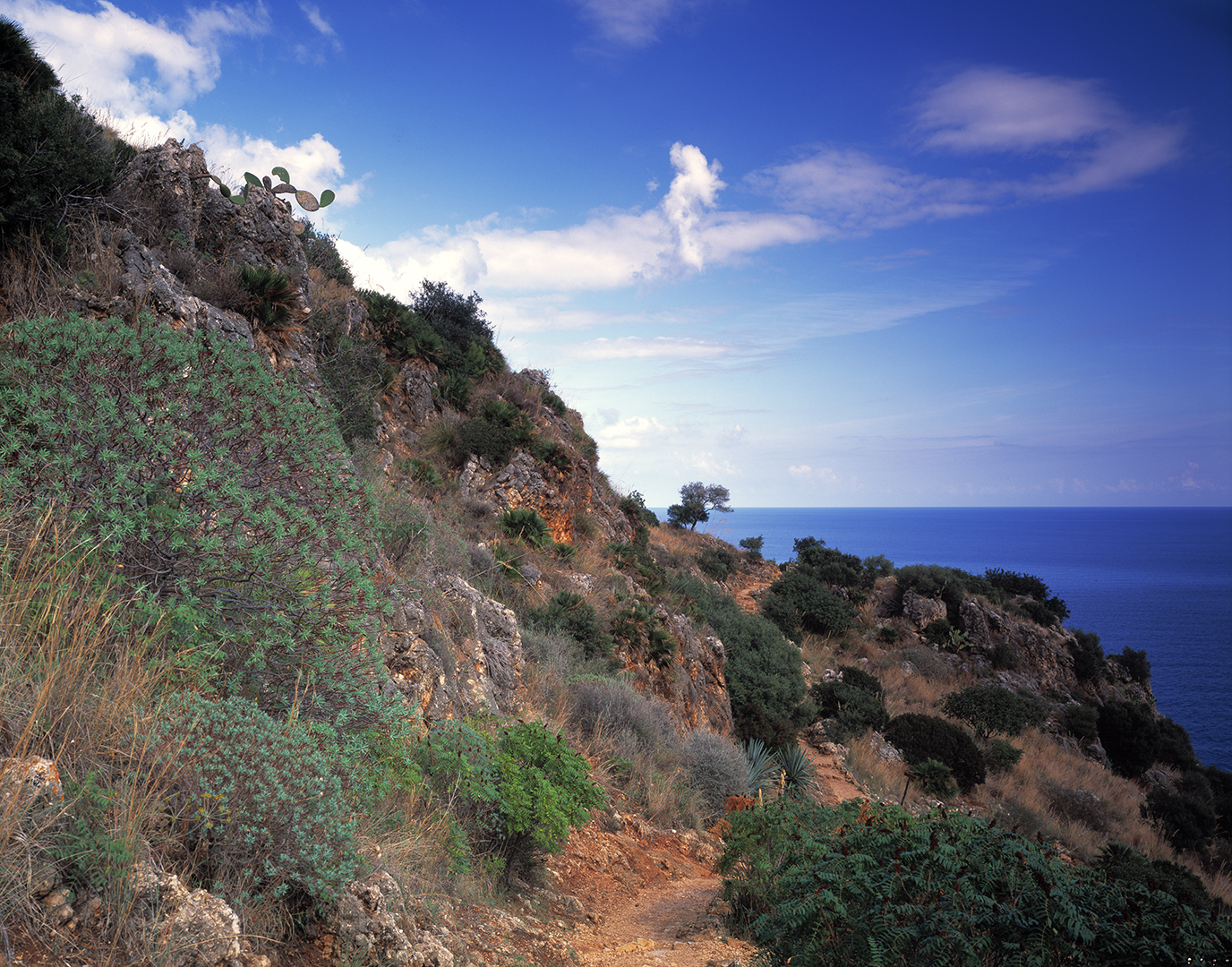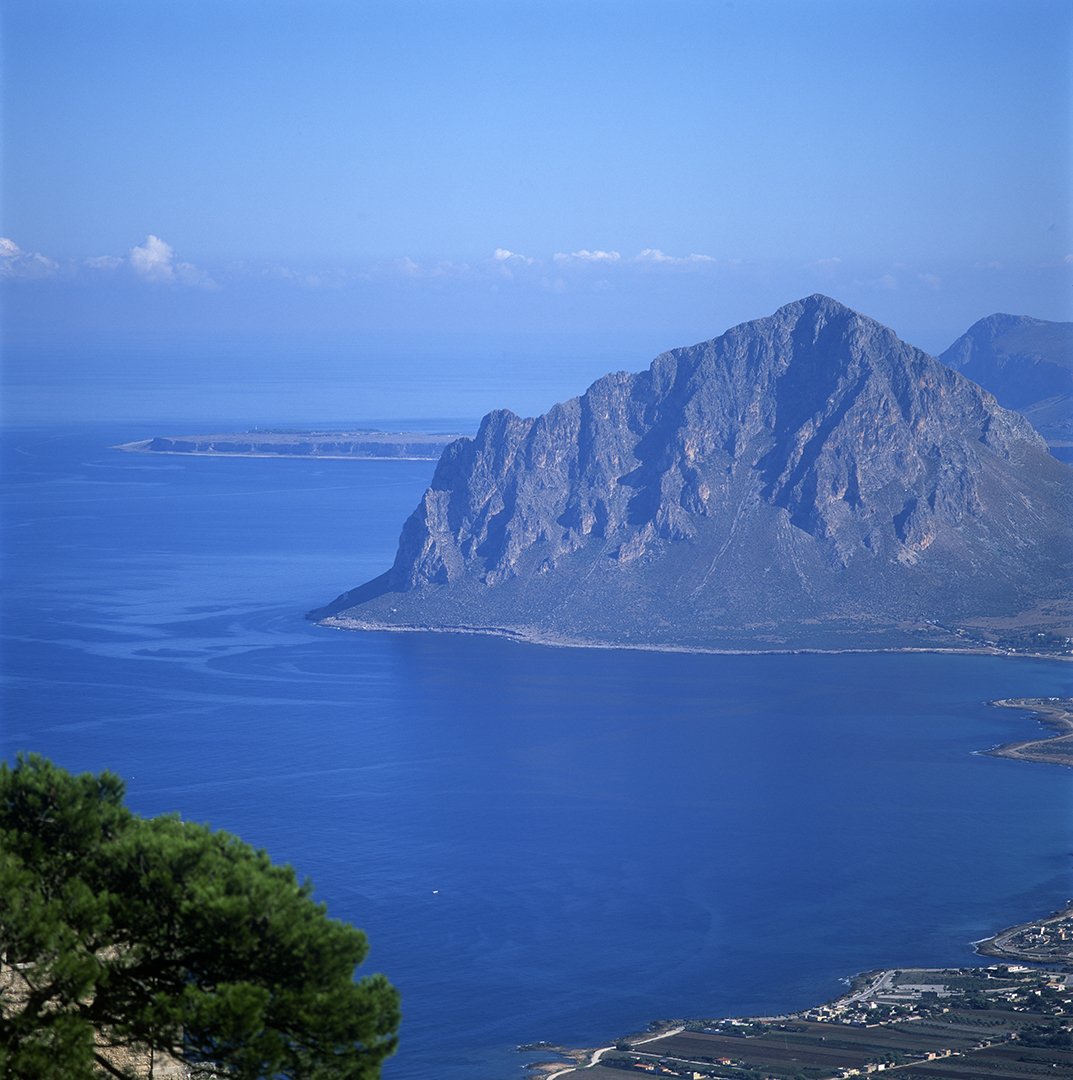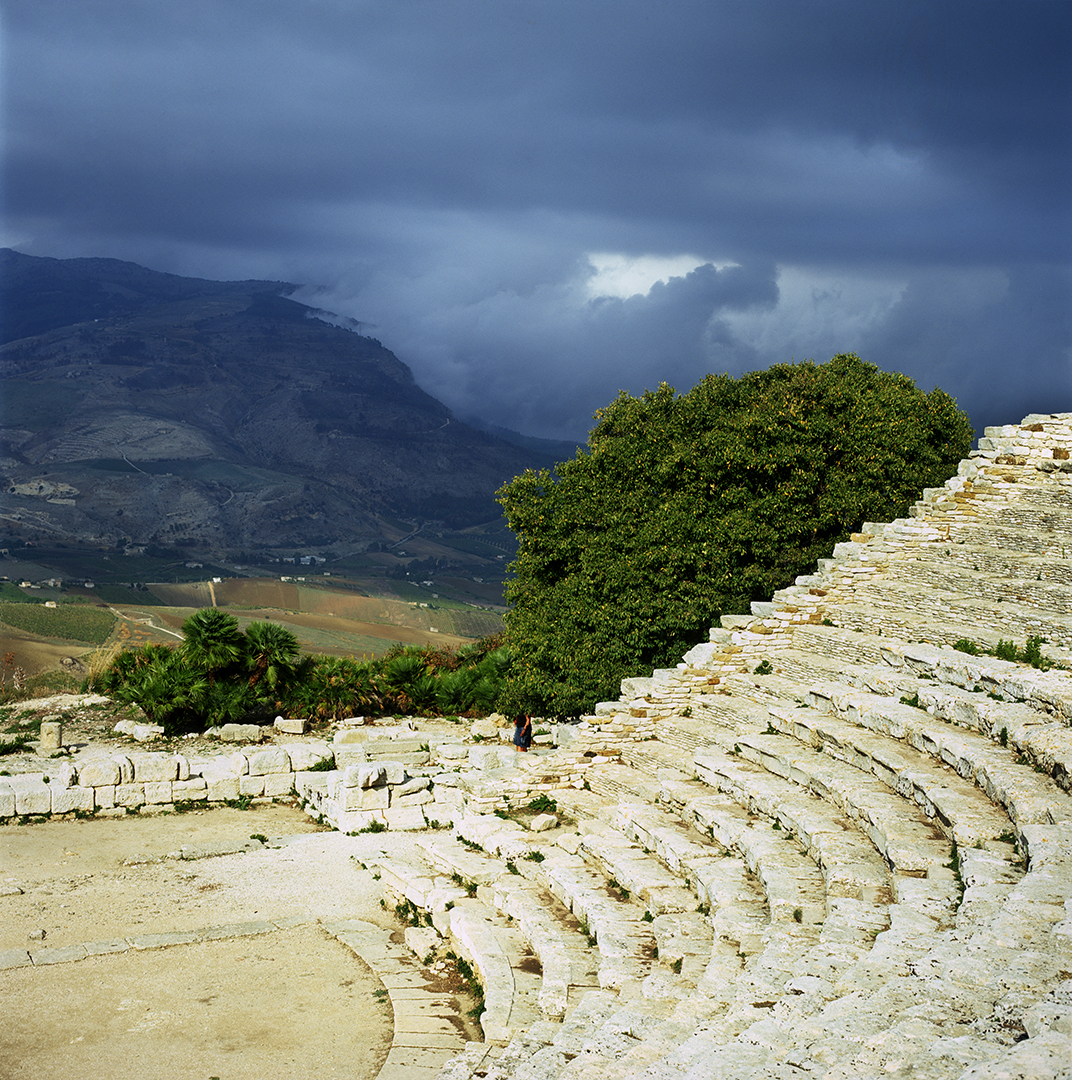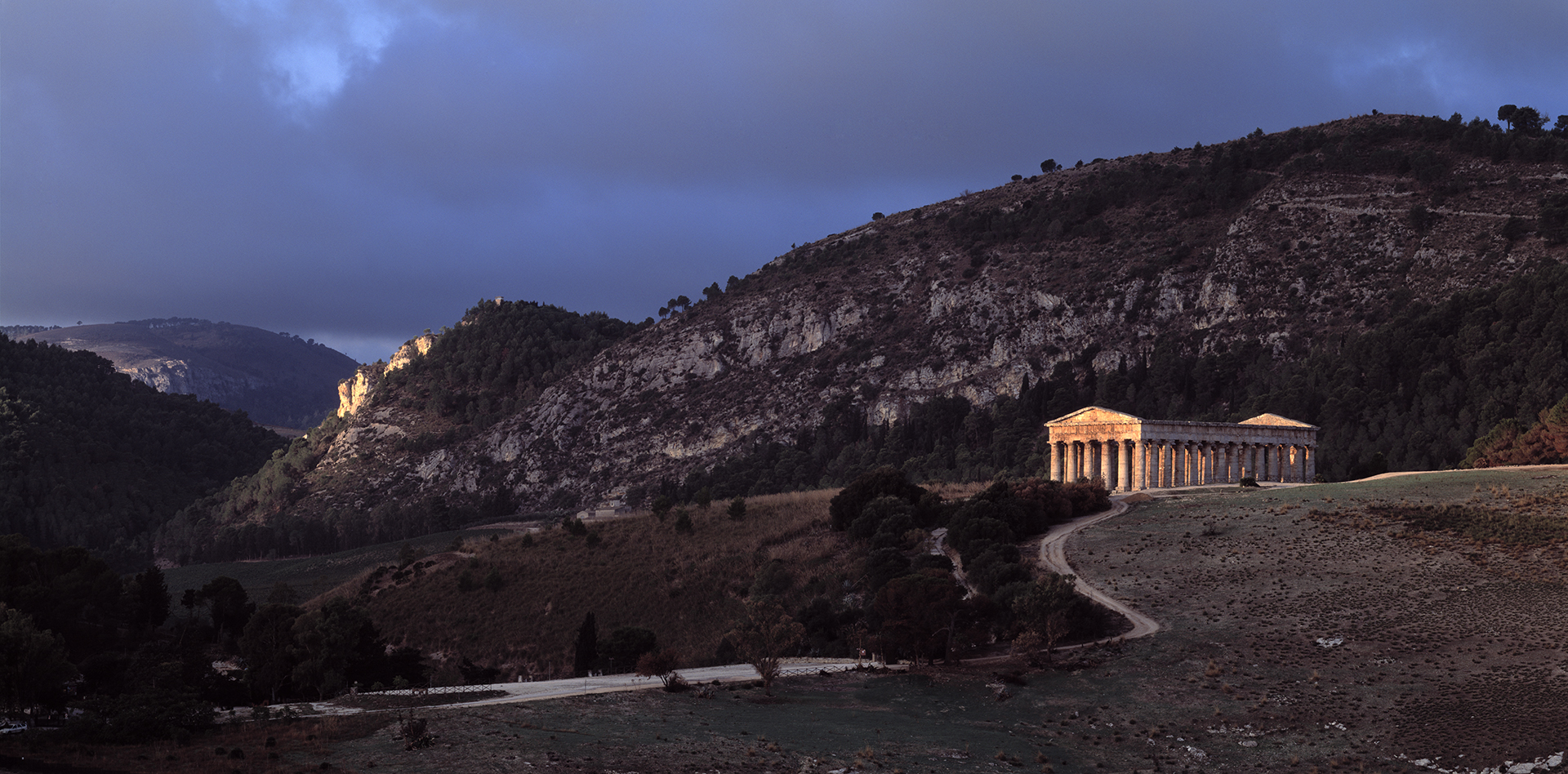Sicily has a “Wild West”, or at least it seems like it.
The landscape – especially in the nature reserve of Lo Zingaro and the north-west corner of the island around the fishing port of San Vito Lo Capo – is dry and desert-like, with some spectacular scenery. There are places where it would not feel all that surprising to see Terence Hill and Bud Spencer1 ride over the hill to the accompaniment of an Ennio Morricone score.
The light is harsher, the colours are brighter and it has an edgier feel than does the softer, more pastel-coloured southeast.

And of course, there is the Mafia, the malevolent roots of which penetrate more deeply here, it is said, than elsewhere in Sicily, especially in towns like Trapani.
But – and here the Wild West comparisons are best set aside – it has layer upon glorious layer of history going back to the remotest antiquity, which causes the classier sort of travel writer (ahem) to use words like “palimpsest”. Here you will find remnants of Ancient Greek, Phoenician, Carthaginian, Roman and Arab, and that short-lived but wonderful hybrid of Arab, Byzantine and Norman cultures that emerged during the reign of the Hautevilles in the 12th Century. Much less of this survives in the east and south-east of Sicily, due I suppose to earthquakes.
I described our arrival in Sicily and settling in to our accommodation near Castellammare del Golfo in “Il Miracolo di San Bagagio“.
San Vito Lo Capo
Next day, we set out from Castellammare and headed for San Vito Lo Capo. There is no direct road from Castellammare to San Vito – such a route was once mooted but would have gone through the nature reserve of Lo Zingaro and, despite being backed by companies with reputed Mafia connections, it was defeated by a local popular movement, which was a pretty big deal under the circumstances. So we headed across the peninsula to Trapani, whence we headed up the coast. There was still a howling hot wind coming in from Africa a short way to the west, and after a long hot summer the country was very stark and desert-like – a bit like Central Australia, only with steeper mountains and bright blue sea.

Why were we going there? We had established that this would be the weekend of a sagra or food festival. These are held all over Italy and generally celebrate the local speciality. In the case of San Vito lo Capo their local speciality is couscous – obviously it is a dish of North African origin, but here you are closer to Tunis than you are to Rome or even Naples, and the Sicilians have absorbed it into their own cooking traditions along with much else from the Arab world. And rather than a simple sagra, this had built itself up as a big multicultural festival and rather than simply “la sagra del couscous” it goes by the rather grandiose name of “Couscousfest”. There were two reasons why we were going. One was that we had had opportunities to go to sagre before but chickened out. The second was that our landlord had been very keen that we should and neither of us would have been game to admit that we hadn’t.
San Vito lo Capo was heaving with people, it was dreadfully hot and we had to park a kilometre or so away and walk. We finally got into town and worked out what we had to do – buy a ticket which entitled us, at one of three locations, to a bowl of couscous, a glass of local wine and a typical Sicilian sweet (while stocks lasted).
When we got to one of the venues, in a series of brightly-decorated tents set up on the beach, I decided that I liked the sound of one of the couscous on offer, and asked the person serving for some. She wasn’t sure who was serving that one, but was pretty sure it wasn’t hers, and directed me down the line. The same happened twice more until I got to the end of the line, where I was directed back to the first bowl. There was a different person serving there now, and he was certain that what he had was what I wanted, and served me some. It wasn’t. Still, it was a fish couscous which was quite representative of local cuisine, and Lou and I swopped. I ended up with Busiate alla Trapanese which is a local pasta in a local sauce which I had been intending to try, and it turned out to be delicious, so all was well. Trapanese sauce is olive oil, tomatoes, basil, garlic, pepper and parmesan.
As we left San Vito it was still desperately hot, with the tents drumming and flapping under the onslaught of the scirocco, but mercifully, that night the scirocco eased, and was replaced by weather which was still pleasantly warm, but which could surprise you with the occasional sudden thunderstorm.
Segesta
Not far from Castellammare is a place called Segesta, with a very fine Greek temple and amphitheatre. During the great period of Greek colonisation around 500 BC, Greek city-states were established along the east and south coasts of Sicily. The Carthaginians settled the west coast. Although Segesta isn’t on any of these coasts it marks the furthest extent of Greek culture in Sicily. The Greek cities showed no sense of ethnic solidarity, and fought some extraordinarily vicious wars among themselves.
We paid an initial visit to Segesta one afternoon when there were a few tourist buses in the car park, and it took a bit of artful composing to get pictures that did not include their passengers.

We have noticed that while the Romans built their towns down in the valleys, around here the Greeks often built theirs on hilltops. Doubtless this was as a result of their perennial warfare, but it does make for some spectacular views. From the amphitheatre we could see the weather changing constantly around us – there was a warm moist wind from the west and on the lee side of a mountain a boiling mass of dark cloud was continuously forming.
Despite the crowds it was an opportunity to scout for further photographs and with the aid of a compass I established that there would be a good chance of the temple being illuminated by the rising sun, and that there was a dirt road at a suitable distance where I would be able to set up my large format camera.
A couple of days later, therefore, I got up very early and drove back to Segesta. The satnav suggested a shorter back way to get there – but I should have known not to trust it. The Italy maps don’t seem to distinguish between good metalled roads and tiny goat tracks and one must be ever on the alert for attempts to send you down the latter. Which it did, on this occasion, and before long I was making slow and very tentative progress along a “road” of a type that was almost certainly not covered in my car rental contract. Every now and then I would pass an early-rising local who would watch in amazement, presumably wondering when James May and Richard Hammond would appear.
Eventually I emerged at Segesta, found my pre-chosen spot, and set up the tripod and the camera while waiting for sunrise. A couple of farm dogs came bounding up barking furiously, but when they saw I had a large format camera they sat down and watched proceedings quietly and with interest. I often notice that a large format camera has this effect. It was a bit cloudy to the west, but the sun found a gap to shine through which illuminated the temple.

In the history of Sicily, the Ancient Greek colonies of Southern Italy (“Magna Graecia”) had some genuine cultural glories – they were part of the broader Hellenic intellectual world, and being provinces did not necessarily make them “provincial”. Even quite recently art works of considerable sophistication have been found, fished up in nets from the sea bed.
That history, however, is also replete with tyrannical rulers, wars, acts of treachery and appalling cruelty. Behind the temple of Segesta is a deep ravine. When Segesta was sacked by the tyrant Agathocles of Syracuse, a reported 8,000 of the inhabitants of the town were killed by being thrown into the ravine. Segesta came under Carthaginian protection, but during the Punic Wars it treacherously murdered the Carthaginian garrison and changed allegiance to Rome. The price for Sicily of the Pax Romana was that it declined into an agricultural backwater.
I was going to make this a combined post on both the Ancient Greeks and the Normans in Sicily but there is far too much to say about the Normans, so will write on them separately in due course.
edit: I have now done so and you can find the post here.
Note1: Terence Hill and Bud Spencer appeared in a number of so-called “Spaghetti Westerns” in the 1960s and 70s. Their real names are Mario Girotti and Carlo Pedersoli, respectively.
Recommended further reading on the History of Sicily: Blue Guide Sicily, edited by Michael Metcalfe, Sicily, Three Thousand Years of Human History by Sandra Benjamin, and Sicily, A Short History from the Ancient Greeks to Cosa Nostra, by John Julius Norwich.

2 Replies to “The Wild West of Sicily”